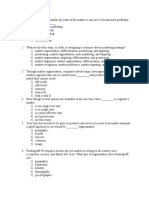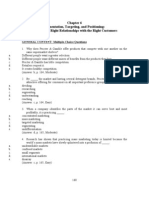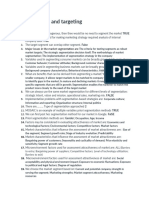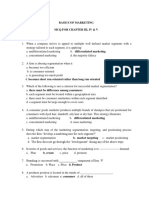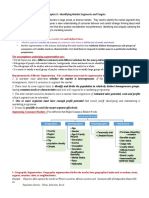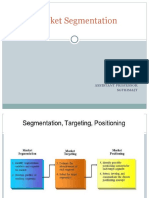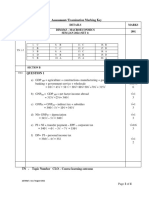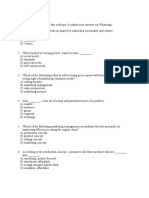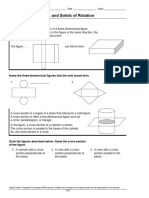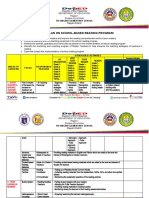0% found this document useful (0 votes)
66 views3 pagesTutorial 5: Chapter 5
The document is a tutorial on market segmentation and customer-driven marketing strategies. It provides 10 multiple choice questions to test understanding of key concepts. These include identifying the correct steps to designing a customer-driven marketing strategy, the most popular method for segmenting markets, and different types of market segmentation like demographic, psychographic, behavioral, and occasions. It also asks about variables used in psychographic segmentation and different approaches to segmenting like undifferentiated vs differentiated marketing.
Uploaded by
Yus LindaCopyright
© © All Rights Reserved
We take content rights seriously. If you suspect this is your content, claim it here.
Available Formats
Download as DOCX, PDF, TXT or read online on Scribd
0% found this document useful (0 votes)
66 views3 pagesTutorial 5: Chapter 5
The document is a tutorial on market segmentation and customer-driven marketing strategies. It provides 10 multiple choice questions to test understanding of key concepts. These include identifying the correct steps to designing a customer-driven marketing strategy, the most popular method for segmenting markets, and different types of market segmentation like demographic, psychographic, behavioral, and occasions. It also asks about variables used in psychographic segmentation and different approaches to segmenting like undifferentiated vs differentiated marketing.
Uploaded by
Yus LindaCopyright
© © All Rights Reserved
We take content rights seriously. If you suspect this is your content, claim it here.
Available Formats
Download as DOCX, PDF, TXT or read online on Scribd
/ 3


